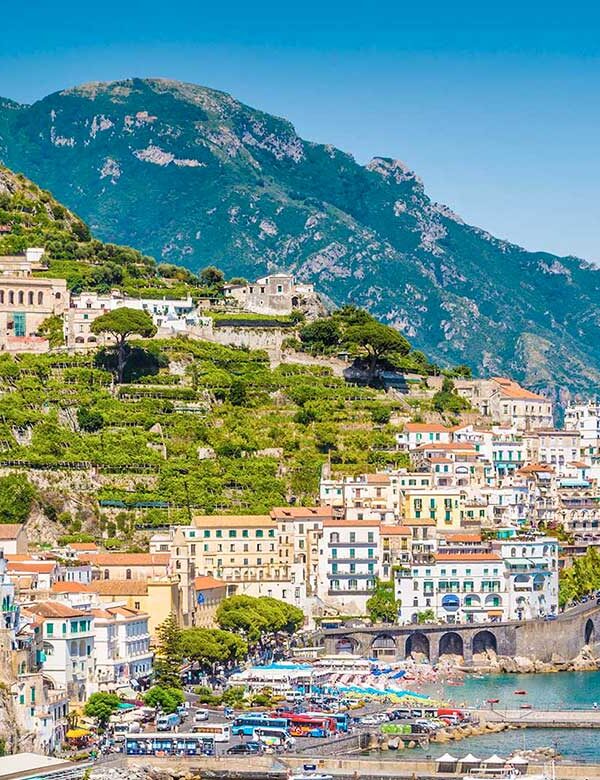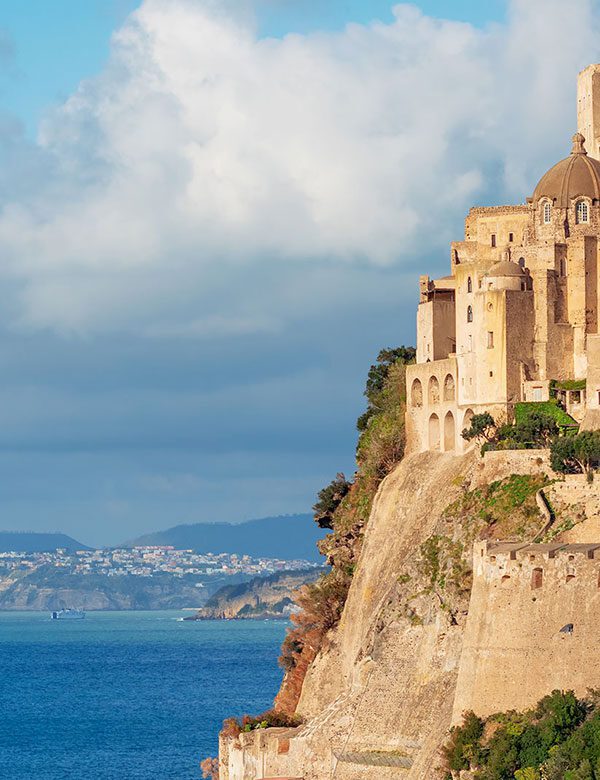Sorrento
From the tufa cliff overlooking the sea, glittering abode of the Sirens, Sorrento majestically dominates the Marina Piccola, which has always been its safe harbour. From there, having visited the beautiful church of Santa Maria del Soccorso, one can reach the coastal lidos, which open up right next to the port, or climb up towards the centre, in its elevated position above the sea, whose presence can be felt everywhere
After a route not lacking in charm between rock walls and imposing buildings perfectly integrated into the former, one reaches the historic centre, which preserves the original Roman layout based on hinges and decumans. At the entrance to the town, on the square of the same name, one immediately encounters the Baroque church dedicated to the patron saint Sant'Antonino, who has been venerated there since the Middle Ages and of whom a silver statue is preserved in the crypt adorned with ancient votive offerings from sailors.
A few steps away is another square, the most important, which appears as a flower garden surrounded by fine period buildings. Ė named after the poet Torquato Tasso, Sorrento's most famous son, who is also honoured there with a statue. After a route not without charm between rock walls and imposing buildings perfectly integrated into the former, we reach the historic centre, which preserves the original Roman layout based on hinges and 'decumani'. At the entrance to the town, on the square of the same name, one immediately encounters the Baroque church dedicated to the patron saint Sant'Antonino, who has been venerated there since the Middle Ages and of whom a silver statue is preserved in the crypt adorned with ancient votive offerings from sailors. A few steps away is another square, the most important, which appears as a flower garden surrounded by fine period buildings. Ė named after the poet Torquato Tasso, Sorrento's most famous son, who is also honoured there with a statue.
On the ancient 'decumanus minor', in the heart of Sorrento, announced by a soaring bell tower with a large ceramic clock, is the Cathedral complex consecrated to Our Lady of the Assumption and Saints Philip and James. It consists of the Bishop's Palace and the adjoining 12th-century Mother Church, which has been renovated several times and rebuilt with its current Baroque appearance. Ten centuries of history of which a remarkable heritage of works of art in various styles remains. The main artery of the centre, corresponding to the 'decumanus major', Corso Italia took its name after 1861. Ė the street for strolling and shopping, where Sorrento's social and cultural life takes place. The white Villa Fiorentino, built in the 1930s by Antonio and Lucia Fiorentino near the ancient city walls, hosts art exhibitions and a rich programme of cultural events throughout the year.
 Hello Alilauro 0814972238
Hello Alilauro 0814972238















